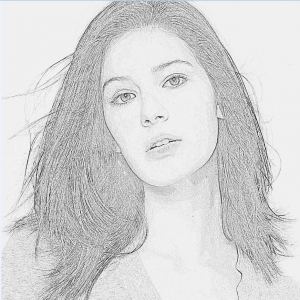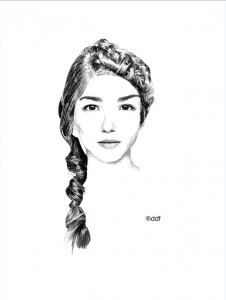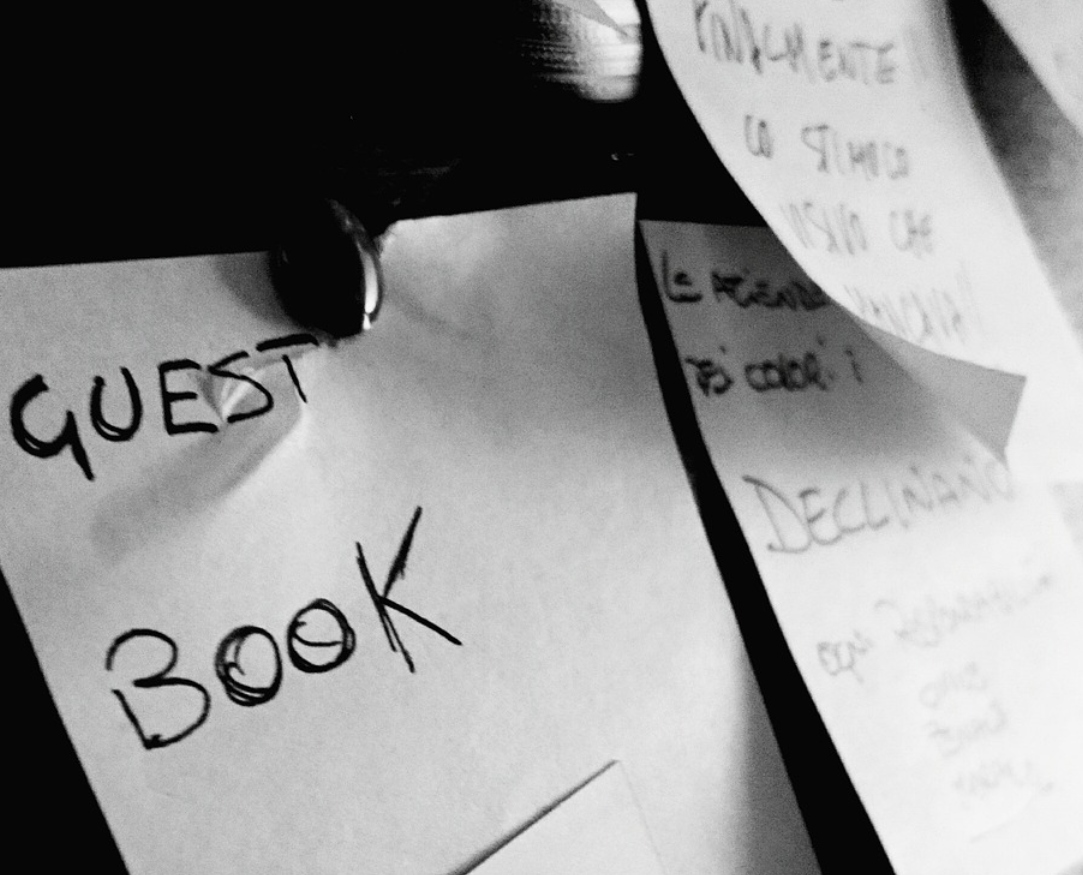It’s All About the Face: Creating Character Images That Work
By Guest | December 18, 2016 |

photo compilation by D.D. Falvo
It’s our pleasure to introduce you to today’s guest, D.D. Falvo! D.D. is no stranger to the WU community; in fact, she is a longtime member of WU’s own Twitter team. A little more about her, from her bio:
D.D. Falvo writes fantasy. She’s the gatekeeper of magical worlds, from which a stray dragon or two has been known to follow her home. She feeds them cat treats and they help with her current WIP, Lumen. She lives in the deep south with her husband, two daughters, a sassy cat, and the ghost of a stubborn Irish Setter.
She’s here with us to talk about the power of strong visuals — in particular faces — in your fiction, and how you can manipulate them to your advantage.
Learn more about D.D. on her website, and by following her on Facebook and Twitter. Welcome, D.D.!
It’s All About the Face: Creating Character Images That Work
One day, Grok painted the outline of his pet bison on the family cave wall. Pleased, he grunted at his wife, Mindy, until she cooed with appreciation . . .
The human love affair with pictures has been ongoing for ages. Pictures don’t just predate the written word, they are the foundation for it. Images create words, and words create imagery.
For writers, imagery is a siren call to creativity, and a workhorse driving production.
The Siren Call
Story develops differently for everyone, but when inspiration flows, image is involved in a big way and there’s science behind that. According to the Visual Teaching Alliance, 40% of all nerve fibers connected to the brain are linked to the retina. The things we see are mainlined straight to our emotional center.
This explains why, for some writers, a strong visual is a siren call, leading creation. In the winter of 1962, three songwriters sat in a plaza, enjoying Brahma beer, when seventeen-year-old Heloísa Pinto walked by. Inspiration struck. “The Girl from Ipanema” was written right on the bar napkins.
The allure of imagery compels readers as well. It’s said that one should never judge a book by its cover, but a writer counts on it. On the cover and across the story pages, a character’s physicality is an important part of the reader experience.
Have you considered the type of response your character’s features might evoke? Fictional faces are a key opportunity of influence. Helen of Troy’s countenance ignited a war. The green visage of the Wicked Witch sent children cowering into couch corners. The Elephant Man’s malformations could make a stalwart weep. Whether it’s weaponized beauty, nightmares-come-to-life, or heartbreaking reality, the right visual triggers a powerful response.
The Workhorse
Who hasn’t hunted through notes, in search of a forgotten detail? Ever close your eyes and have trouble imagining how that villain’s facial scar might move when he grimaces? Visual aids pull us a step further on the journey, and improve efficiency.
- If you have no idea what your cast should look like, imagery can help clarify and inspire.
- Pictures save time— the 13 milliseconds your brain takes to process an image beats the heck out of chasing down a note.
- Having the right character image on-hand can make the time writing about him or her more productive. Social Science Research Networks tell us that 65% of the human population are visual learners, and 3M corporation states the brain processes visual information 60,000 times faster than text.
- Visuals stick in long-term memory, improving recollection. Each time you connect with an image, you’re making a deposit in the brain’s databank.
Of course, none of the above is helpful if your character image is cerebral view only. So how do you wrangle the tangible out of an intangible? For those who illustrate and write, you’re doubly-blessed; proceed to Go, skip the angst, and collect your bounty. But if you’re limited to stick figures (like me), you’ll want other options . . .
The Power of The Digital Age
Public faces offer an unlimited resource pool for inspiration. The Internet is a digital mug book of vast proportions.
At the recent Writer Unboxed UnConference, Anne Greenwood Brown suggested searching “Hot Hollywood” for YA character inspiration. Go ahead, have a look. These are the faces the mainstream public admires, desires, and maybe even despises. If you’re aiming for the popular choice for physical attractiveness, these famous faces tick all the right boxes. Thank Phi 1.618 for that. It’s a 2009 university study which validates that an ideal facial feature arrangement, aka The Golden Ratio, optimizes the perceived attractiveness of any given face. Hollywood has The Golden Ratio in abundance.
Side note: scientists state that “ugly” faces are more memorable. There are no formulas for ugly—and I hope to never find one—but imperfections are exceedingly arresting, so there’s that.
You don’t need artful search words to get great results. Google “interesting faces.” I fell in love with a few. What did you think?
Envision
A public image can evoke all the feels, but you want to see the character you created, the one who speaks to you—not the popular movie star whose latest divorce mines dirt back to the Bronze age. Modern images are a sensory overload. The variety of color, clothing, and backgrounds leave no room for the imagination to wander. Paint programs can minimize the distractions. Try reducing the background with a tight crop. Remove color with black & white, or sepia filters. My personal favorite is the “pencil sketch” option. For me, it clears the noise and feels timeless.

photograph by D.D. Falvo
You can take your “sketch” a step further by outlining the face on tracing paper. Add or remove a few details. Don’t forget the embellishments! Some are statements of tradition or behavior. Some are stories within the story, creating layers of complexity, e.g. scars, disfigurements, tattoos.
Feeling adventurous? Start from scratch with a Police Sketch program. FlashFace Full and FlashFace Women are two smart device apps that offer hundreds of choices for face shapes and features. Web-based sites such as Pimp The Face and Picture to People let users experiment online. For more options, search key words such as “face sketch generator” or “design a face.”

Image created by Flash Face Women
How do you find images for your characters? Has a single image ever inspired an entire piece of work for you? I’d love to hear what captured your interest, and why. If concept is your trigger for Story, has a visual aid ever changed the course you had planned?










Thank you, Denise! I seem to move house after each draft of my novel. To remain connected to my story while I packed everything up, I drew my main characters. I found this a valuable and insightful exercise, bringing me into a deeper connection with my characters. I used Google Images and Pinterest. I’m excited to explore options with your suggestions of FlashFace Full and the others. Whoop!
Thank you, Brin. :) I’ve seen your beautiful artwork and you’ve got skills! Kella is just as I imagined her.
Yes! Definitely check out FlashFace. The beauty of it is that it’s quick, you can choose and reject and re-choose different facial features (there’s about 900!) in rapid succession until you find the ones you want–I’ve stumbled onto bushy eyebrows and a magnificent nose that I might not otherwise have considered.
Once you’ve experimented, I love to hear what you think.
Thank you for the wonderful article. My “story outline” always begins with a simple table inserted into WORD. The first box always has a picture of the character (and sometimes a setting).
Thank you for taking me to the next level with your suggestion to remove the color, etc. I like it a LOT!
Dawn Mattox
Dawn, thanks for mentioning your use of a table in Word. Despite editing other people’s tables all the time professionally, and having firmly in mind that well-known table of a Harry Potter segment that J.K. Rowling drew by hand, I had not thought of using Word tables to lay out my work. Simple! Easy! As a good friend puts it, that’s a BFO (blinding flash of the obvious). 1000 thanks again!
Thanks for your comment, Dawn! Making a table is a great suggestion for writers who use Word, and I really like that you include the setting too. :) Like you, I’m a fan of visual prompts. They free up space in my crowded brain, and let me take the character, and/or place, to deeper level.
I love this! I actually had colors in my head when the idea for my book(s) began to percolate. A palette that set a mood; mossy greens, fog and mist, a flash of bright red hair. I’m in love with graphite pencil, so I’ve been sketching my characters (among which are several dragons!) for years. I also make maps and diagrams to help block scenes and choreograph action. A photo of the hooded face of Bruno the heretic monk inspired the look of one of my characters. I saw a story of passion and anguish in his face before I learned about him, which compelled me to find out more. Thanks for a wonderful post!
Thank you so much, Susan. So . . . you’re one of the lucky ones who can draw. After reading your comment, I’ve imagined your workspace as filled with beautiful sketches–the variety feels inspiring. My muse is most interested in those dragon sketches, of course.
I loved reading how Bruno the monk inspired you. Strong emotion is very compelling. It gives our creativity wings.
Hi D.D.,
Excellent article! I’m a visual person so while planning my series I started my Artemis Crow Writes Pinterest page, for me originally. I combed thousands of images on Pinterest and DeviantArt and created boards based on one image that I knew had to become a new species. Even after creating 21 species, I’m still saving images in a private board for future books. Today, all of the boards of the species introduced so far are public so readers can see the images that inspired the world and creatures and peoples inhabiting it. So much fun!
Hi Artemis! You peaked my interest, so I had to go look. There are some really awesome images on your boards, and I love the names. Pinterest *is* such a fun way to collect and ponder the possibilities–it’s also dangerously addictive. The imagination is a hungry thing, and has no proper sense of time.
Thanks for your comment. :)
Ooh! More fun online to be had! I wasn’t aware of any of these drawing apps/programs, so thank you!
I love Pinterest because I can share my internal impressions through pictures. I think I conglomerate my characters off of people I’ve seen, often celebrities. They’re not one hundred percent that person, but they inform my subconscious, I guess. I recently realized early Adam Lambert looks a lot like my male pixie character. It was a surprise, but it makes sense because when I first started the story Lambert’s Better Than I Know Myself was popular.
I really enjoyed your post!
Thanks, Lara! :)
I completely agree. Images do inform the subconscious (that’s a great way to put it), and then it refines the details when we are not actively writing/creating. Do you remember the post you did a few years ago, about how the subconscious works? I thought about that while writing this essay. The human brain is fascinating.
Congrats on finishing your second novel! :D
James Scott Bell suggested using Google Images to find images of characters. So now I search on a certain criteria, i.e. handsome young adult male. Then I page through the images until I find one that evokes how I feel the character should look. I make a copy of the image just for my own use and store it on my hard drive. Then I import it into Scrivener, into my character image file. My series has an image file of the major characters and villains of the entire series. Love how this helps me. I take a look at the character image when I need to refresh my memory as I write.
Hi Barbara! Your comment, re: how you keep images for personal use only, brought up an important issue I had considered adding to the essay. Non-public images collected from the internet should only be for personal use. There is a legal definition for how much an image must be altered to avoid copyright infringement, but finding accurate legal specifics was like trying to nail jello to a tree.
One court, who found in favor of the defendant, explained their decision as follows:
“… the court wrote “Defendants removed so much of the original that, as with the Cheshire Cat, only the smile remains.” The original background is gone, its colors and shading are gone, the expression in the eyes can no longer be read, and the effect of the lighting is “almost extinguished.”
The Cheshire Cat example made me laugh. But copyright infringement is a serious matter. Thank you for giving me the opportunity to address it.
(P.S. I love Scrivener! I put images in the inspector.)
Wonderful suggestions and sources, D.D. Thanks! The advances in neuroscience these days have much to teach us about our writing.
Thanks, Anna! I found all of the science to be absolutely fascinating. I’m curious about “that well-known table of a Harry Potter segment that J.K. Rowling drew by hand”. I hadn’t heard of that. Can you tell me where you found it? I love to see it.
BFO made me laugh!
Just google “JK Rowling hand-drawn table images.” You’ll see more than one.
I collect random images: an ad in a copy of Glamour or GQ, a movie poster, something seen in the AARP magazine.
None of them are my characters, but something about them reminds me of the physical traits, or the facial expression – and a composite is handy.
I have searched through thousands on actor sites, and bookmark or do a screenshot of intriguing almost-right people.
Catch them when you can – people can look different from image to image of themselves: one has the expression you are looking for – and another makes him look like a total dork!
It’s not the human you want, but the idea a picture of the human ellicits in your brain.
I like Dramatica’s character building section, because you assign an image – and it move it to all the places where a picture of the character is shown.
Hi Alicia! I so agree. All the small, random details on our journey add to the larger picture, the one we cobble to suit our story. I had never heard of Dramatica, so I looked it up. It’s a very interesting site!
Finding that exact impression is, as you stated, so hard. That’s why finding ways to alter those “almost there” images works well for me.
Thanks for your comment. :)
Very Informative article. For me, pictures are stories waiting to be written.Thanks for sharing!
Thanks, Greg! They certainly are. I wish I had time to write them all. lol. Thank you for your comment.
I was unfamiliar with the techniques discussed in this post, and with a lot of those posted in comments. These are intriguing avenues to envision new faces and how they move. Thank you!
Thanks for taking the time to comment! The science behind how our brains perceive images was fun to research, but learning how to come up with alternative images was fun. The ideas shared by commenters were much appreciated. :)